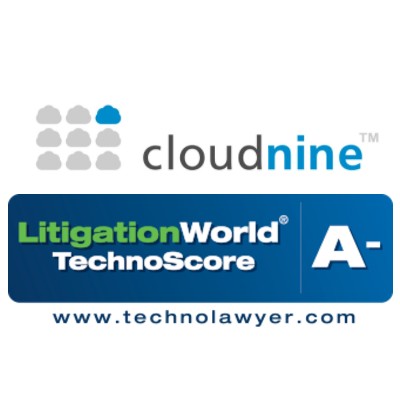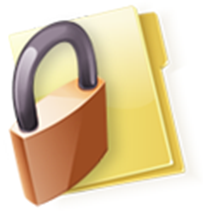E-Discovery Day 2.0: eDiscovery Trends
We’ve recently celebrated Halloween, we’re about to celebrate Thanksgiving. Guess what we celebrate next? You guessed it, it’s…E-Discovery Day!*
As the site for E-Discovery Day states, “[o]n December 1, 2016, thousands of Legal and IT professionals will gather both online and off to discuss e-discovery. They will be met with a full day worth of informative webcasts, in-person networking events and more—all hosted by E-Discovery Day sponsors.”
Last year, according to their site, there were 1,351 webcast participants, 26 eDiscovery experts who presented and 83% of last year’s participants said they would participate again this year.
This year, there are several excellent webcasts scheduled, including:
- Mainstream News & E-Discovery: What You Should Be Watching Out for in 2017: Panelists Craig Ball, Robert Cruz, Tara Jones and Zach Warren will recap what news events you should be tracking and proactively advising your legal team on to ensure you’re prepared to take on new e-discovery risks in 2017. Presented by Actiance and Exterro. TIME 11:15 AM ET / 8:15 AM PT
- Rule 26(b)(1): How to Make a Persuasive Proportionality Argument: In this webcast, learn tips for making a persuasive proportionality argument that will hold up in court and how offering alternative remedies to overbroad productions requests can heighten your changes for a favorable ruling from panelists Judge Joy Conti, Ralph Losey and Maura Grossman. Presented by Exterro. TIME 12:30 PM ET / 9:30 AM PT
- 10 Years Forward and Back – Automation in eDiscovery: This unique session highlights the progress of eDiscovery technologies during the last decade and looks forward through the lens of innovation to the next ten years data discovery. Panelists including Mary Mack, George Socha, Doug Austin, David Horrigan, Bill Dimm, Bill Speros will be sharing their thoughts and considerations regarding the use of Technology-Assisted Review. Presented by ACEDS and CloudNine. TIME 1:00 PM ET / 10:00 AM PT
- What is E-Discovery Costing Your Organization?: In this webcast, benchmark your organization’s e-discovery costs against others and learn what metrics you should be focusing on to accurately track your e-discovery spend with panelists William Hubbard, Ross Dubinsky and Bobbi Basile. Presented by HBR Consulting, Exterro and Morae Legal. TIME 1:45 PM ET / 10:45 AM PT
- Rule 37(e): Less Sanctions, More Negotiating: In this webcast, learn how the courts are currently interpreting this new spoliation standard and get tips for safeguarding your organization from future spoliation sanctions with panelists Joshua Gilliland, Esq., Judge John Facciola (Ret.) and David Rohde, Esq. Presented by Epiq and Exterro. TIME 3:00 PM ET / 12:00 PM PT
- Why Every Firm/Legal Department Needs to Invest More in Legal Project Management: In this webcast, learn how to utilize legal project management principles and tools to get tasks completed faster and discover how other legal teams have incorporated legal project management at their organizations with panelists Seth Eichenholtz, David Yerich, Esq. and Thomas Mullane. Presented by Exterro and LTPI. TIME 4:15 PM ET / 1:15 PM PT
- E-Discovery Training for 2017: In this webcast, learn how to take your e-discovery acumen to the next level with insights from legal/e-discovery teachers on the topics you should be learning more about and how to get involved with educational e-discovery groups in 2017 with panelists Mary Mack, William Hamilton, Eric Mandel and George Socha. Presented by ACEDS, EDRM, Exterro and LTPI. TIME 5:30 PM ET / 2:30 PM PT
- eDiscovery 101 – An Alternate Career Path: Lighthouse eDiscovery will host a free educational webinar on eDiscovery Day 2016. Geared towards law students and others considering entering the ediscovery profession, this webinar will highlight how and when ediscovery fits into litigation, outline who the players are, and provide a glimpse into a day in the life of ediscovery work. Presented by Lighthouse Discovery. TIME 6:00 PM ET / 3:00 PM PT
In addition, there will be in-person networking events in Dallas, Detroit, Houston, Jacksonville, Los Angeles, Orange County and New York. Click on the appropriate link to register for the in-person event near you!
I’m excited to be presenting again with my colleagues at the “10 Years Forward and Back – Automation in eDiscovery” session – it was very well received at The Masters Conference in DC in October. So, if you missed it then, you can catch it on E-Discovery Day!
So, what do you think? Do you plan to attend an E-Discovery Day event? Please share any comments you might have or if you’d like to know more about a particular topic.
*You thought I was going to say “Festivus”, didn’t you?
Speaking of Thanksgiving, eDiscovery Daily will return next Monday. Happy Thanksgiving!
Disclaimer: The views represented herein are exclusively the views of the author, and do not necessarily represent the views held by CloudNine. eDiscovery Daily is made available by CloudNine solely for educational purposes to provide general information about general eDiscovery principles and not to provide specific legal advice applicable to any particular circumstance. eDiscovery Daily should not be used as a substitute for competent legal advice from a lawyer you have retained and who has agreed to represent you.








